[ad_1]
The indicators for Norman first seemed at the Upper East Side of Manhattan in early March.
“REWARD. LOST DOG. 4 year old, microchipped, male, tan, Chihuahua. He is not wearing a collar. Missing since 03/02/2018. DO NOT CHASE.”
By mid-April, they have been all throughout New York City. Norman the Chihuahua had long gone lacking right through a walk facilitated by way of a puppy care startup referred to as Wag, and his proprietor Nicole DiCarlo used to be decided to get him house.
She says Wag used to be to start with useful within the seek for Norman. It paid for flyers to be published, and mentioned it will quilt a $five,000 praise for Norman’s go back. It additionally employed a qualified dog tracker. But issues quickly were given bizarre, says DiCarlo. A Chihuahua in her community used to be hit by way of a automotive the day after Norman went lacking, and Wag’s CEO Hilary Schneider attempted to persuade her the useless dog used to be Norman. A supply guy had taken footage, and as soon as DiCarlo noticed them, she disagreed.
“The other dog was bigger, and the fur coloring was wrong,” she says. “They had no real evidence that it was Norman, and yet the CEO tries to tell me he’s deceased. I’ve asked a few family members to look at the photos, and we all know it’s not him. They just wanted to get rid of us.”
DiCarlo isn’t the one particular person to lose a puppy by the hands of a puppy care startup. Elaine Conoly says her dachshund Wally used to be killed by way of some other dog whilst within the care of a sitter she discovered thru Wag’s major competitor, Rover. She has since began a GoFundMe to carry cash to deliver felony motion in opposition to what she calls a “negligent business plastered with lies.”
Wag and are two of the latest and biggest avid gamers within the booming puppy trade, each and every with greater than $300 million in mission capital investment. Both corporations are virtual marketplaces the place puppy house owners can to find dog walkers, puppy sitters, and boarders by means of an app, with maximum products and services starting from about $20 to $50. Wag is frequently referred to as “Uber for dogs,” because it assigns on-demand walkers and sitters, an identical to the best way Uber’s set of rules assigns drivers, although puppy house owners in the long run approve or decline the employee they’re presented. Rover has earned the nickname “DogBnb,” as customers can sift thru loads of to be had employees who set their very own costs.
Wag and Rover are preventing each and every different for dominance whilst concurrently embroiled in a unique, messier more or less feud — one with puppy house owners themselves. Plenty of customers reward the startups for his or her comfort, however many also are talking out with allegations of negligence and empty promises.
The corporations are briefly finding out that after it comes to other people’s liked animals, the potential of earnings is top, however so are the stakes.
Pets are taking on increasingly more room in our lives. They dine proper subsequent to us at eating places, panting thankfully at their house owners’ ft. We commute with them on trains and on airplanes, the place the choice of on industrial flights jumped 56 % from 2016 to 2017, in accordance to the industry affiliation Airlines for America. They’re increasingly more appearing up at paintings too, with employers boasting pets within the office as an added perk.
Pet house owners spend $86.7 billion on their animals, in accordance to the analysis company Mintel. This is a marketplace that now contains , posh furnishings, luxurious collars, and spa products and services. A decade in the past, the puppy trade netted simply $44.6 billion a 12 months. Why the surprising surge in coddling and spending? Millennials, in fact.
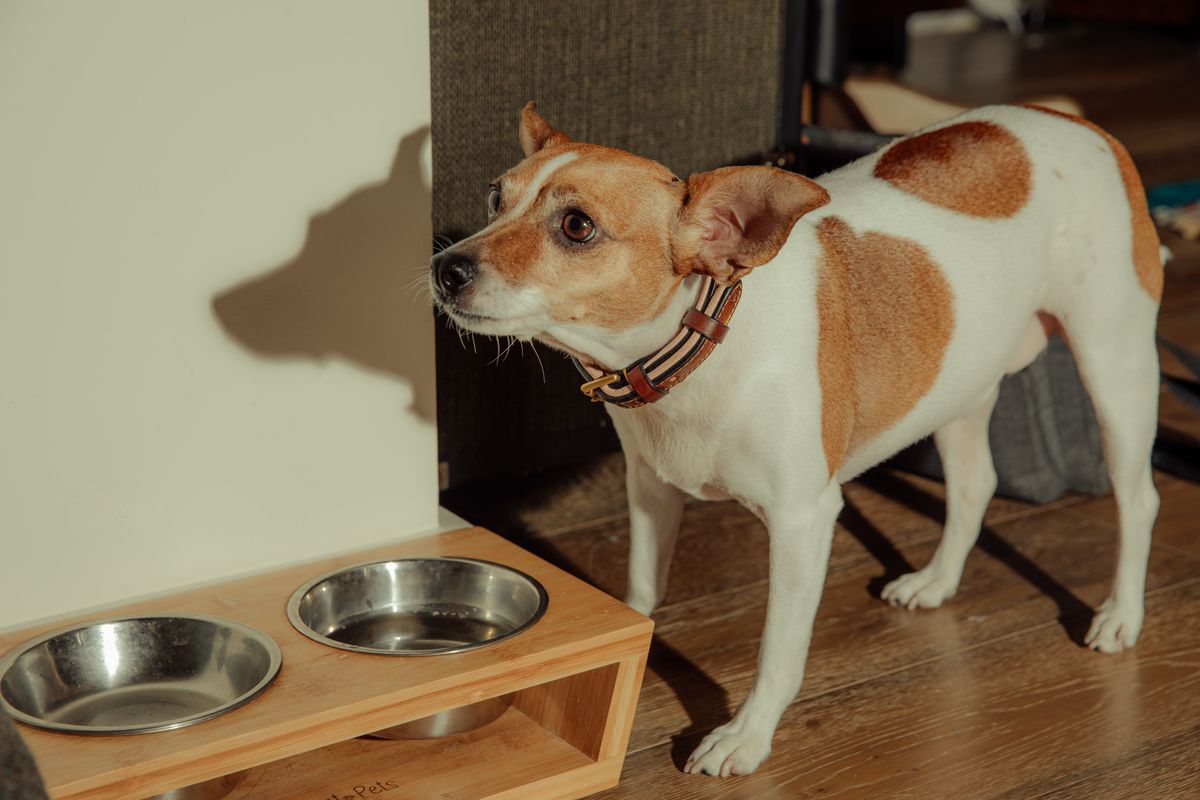
While millennials won’t personal vehicles or properties, three-quarters of Americans of their 30s have canine. Somewhat greater than part personal cats. A 2017 survey discovered that 68 % of US families now come with a puppy, a determine that’s larger 12 % because the 1980s; millennials have surpassed child boomers in puppy possession and are the rustic’s biggest pet-owning age demographic.
With millennials having youngsters later in existence, it’s most likely now not sudden such a lot of see their pets as “starter children.” This has in flip impressed the much-maligned time period “fur young children” — and the uptick in millennial spending on fur young children has led to a gold rush.
“Investor interest is always piqued when you have a large and growing market with enthusiast consumers that have rapidly changing needs and expectations,” says Eurie Kim, a spouse at Forerunner Ventures, which has invested in numerous puppy startups. “We’ve seen new businesses emerging to tackle on-demand vet services, televet services, marketplaces for buyers and sellers of pets, and, of course, dog-walking and -watching services, and food, treat, and supply companies.”
Rover used to be began in December 2011 by way of 3 dog fans in Seattle’s tech scene. Greg Gottesman, who spent 20 years as a mission capitalist, got here up with the theory after his Labrador used to be mauled at an area kennel. He recruited Microsoft’s former basic supervisor Aaron Easterly to be Rover’s CEO, and Philip Kimmey, whom he met at Seattle Startup Weekend, to be the corporate’s director of tool building.
Rover introduced with in a single day puppy boarding, and inside of two years it had gathered just about 80,000 employees throughout four,300 US towns. In 2015, it into book-ahead house day care, drop-in visits, and dog strolling. These days, Rover has greater than 200,000 employees in 14,000 towns (Rover would now not percentage the choice of puppy house owners who use its provider with Vox).
Easterly considers Rover a real early marketplace disruptor and the puppy trade person who used to be actually ripe for disruption. Big-box outlets like Petco and Petsmart have usually ruled the huge puppy marketplace by way of specializing in two of its maximum profitable sectors: meals and equipment, which in combination make up 57 % of spending, in step with Mintel’s information. But the puppy products and services sector — which incorporates strolling, sitting, and boarding — has historically been small and localized, with none corporations providing puppy care on a big scale.
“Greg was focused on fixing the kennel problem, because kennels are expensive, rigid, and most people don’t use them, while I was sick of having to ask my friends to take care of my Pomeranian,” Easterly says. “She had skin conditions, and when I’d take her to friends, I’d be like, ‘Here’s her ointment, it needs to be rubbed on her belly three times a day.’ They would stare at me with their jaw open, and then say, ‘Dude, I’m doing you a favor, so you’ll get her back alive, and that’s about all I’m gonna promise.’ We underestimated the dissatisfaction with hiring friends and family, and that there are aspects of a commercial relationship that could actually be very positive.”
Wag got here a couple of years later, in January 2015, based by way of Los Angeles-based brothers Jonathan and Joshua Viner. The Viners have been early Facebook recreation builders and constructed a social media community referred to as ChirpMe. After ChirpMe were given received, the brothers approached Jason Meltzer, who used to be working a thriving LA dog-walking trade, about adapting his corporate to an on-demand Uber fashion. (The Viners are not with Wag; Meltzer, who used to be now not made to be had for this tale, nonetheless serves as its “leader dog officer,” operating on choose initiatives and performing as a emblem ambassador.)
Wag is to be had in 110 towns and has 50,000 employees; like Rover, Wag would now not percentage the choice of puppy house owners who use its provider with Vox. Schneider, the CEO, considers Wag’s greatest innovation to be the on-demand products and services it brings to puppy care.
“Technology has enabled us to enjoy conveniences we never had before. Just look at how Uber has increased the demand for cabs,” Schneider says. “We invented the on-demand dog category and we’ve been improving on that experience over the last three-plus years.” (In 2017, Rover added on-demand dog strolling to its product suite, a transparent response to Wag’s choices.)
Wag and Rover’s pricing is analogous. On-demand dog strolling from each Rover and Wag prices $20 for a 30-minute walk or $30 for 60 mins. Wag’s boarding and sitting products and services price $26 an evening, plus a $15 price for pickup and drop-off; Rover employees set their very own costs for boarding and sitting, however the reasonable employee fees a complete of $40 in step with night time. The corporations diverge very much, then again, when it comes to the minimize they take from employees. When Rover introduced, it took 15 % of each and every transaction; that’s since larger to about 20 %. Wag, however, takes 40 %.
Although the corporations have an identical investment figures — Rover has $310.nine million in mission capital funding, Wag has $361.five million — Rover is a miles larger trade, with a valuation of $970 million to Wag’s $650 million. This is partly a results of Rover being in trade for greater than double the time Wag has been, and since Rover received the competing boarding startup DogVacay in 2017.
But Wag is aggressively encroaching on Rover’s territory. It expanded into sitting and boarding in 2016, and in accordance to transactional information equipped to Vox by way of the analytics corporate Earnest Research, Wag is rising a long way quicker than Rover. As of June 2018, Rover’s gross sales have been expanding at a fee of 30 % 12 months over 12 months; Wag gross sales have been expanding at a fee of 165 % right through that very same time.
When it comes to consumer acquisition, Wag and Rover are each fishing in the similar pond and the use of the similar equipment. They put it on the market closely to millennials on Facebook and Instagram and make use of equivalent promotional advertising and marketing techniques, giving new customers unfastened walks and texting present customers with cut price codes right through off-peak hours. Their branding is lovely an identical too: Both corporations have inexperienced trademarks that function a paw print, and each promote inexperienced branded bandanas.
The startups’ CEOs are cordial and imprecise when addressing their pageant. Schneider says Wag is healthier supplied to “understand the needs of pet parents,” whilst Easterly says Rover gives “richer” products and services.
Pet house owners are left to make a choice aspects for themselves. Uri Fintzy, puppy father or mother to cats Lanna and Tommy, is a Rover evangelist.
“The app is easy and a great way to vet caregivers,” he says. “We use the same two to three sitters, and they have no problem fulfilling our silly requests, like sending us cat selfies.”
Wag consumer Gaby Clingman disagrees. She followed her 60-pound Northern Inuit Luna as a pet whilst operating a busy task in tv manufacturing, and he or she hated having to discover a walker on her personal thru Rover. Though Rover has since introduced on-demand strolling that locates a walker for you, she’s remained dependable to Wag: “It’s the most convenient thing ever. You literally press two buttons, and your dog is being walked.”
Clingman and Fintzy each say they have got few buddies they believe with their pets and so Wag and Rover have develop into integral to their puppy care routines. Still, each admit those products and services price them really extensive money. During busy instances, Clingman says she’s spent $200 a month on Wag. When Fintzy travels together with his fiancée, they spend about $300 in step with go back and forth on Rover’s cat sitters. Is it value it?
“Absolutely,” Fintzy says.
Zach Berger downloaded Rover at the advice of a pal, after coming house from a New York City animal safe haven with Reggie, a wide-grinning pibble (the strategically rebranded identify for a pit bull). He scrolled thru more than a few walkers that Saturday in February earlier than deciding on , a 34-year-old Lower East Side resident with lots of five-star critiques. Rosario now walks Reggie each weekday.
“He loves to eat stuff off the floor, so I have to constantly be scanning the ground,” Rosario says one contemporary summer time morning whilst strolling Reggie thru Tompkins Square Park.
Rosario started operating for Rover in 2014. He used to educate citizenship categories, and labored as a manager for a dog-walking corporate in Harlem earlier than shifting to Rover complete time. He says he’s heard of Wag however hasn’t investigated the platform since he’s satisfied together with his present paintings scenario.
“I realized I just wanted to be responsible for myself,” Rosario says. “Rover helps me feel independent.”
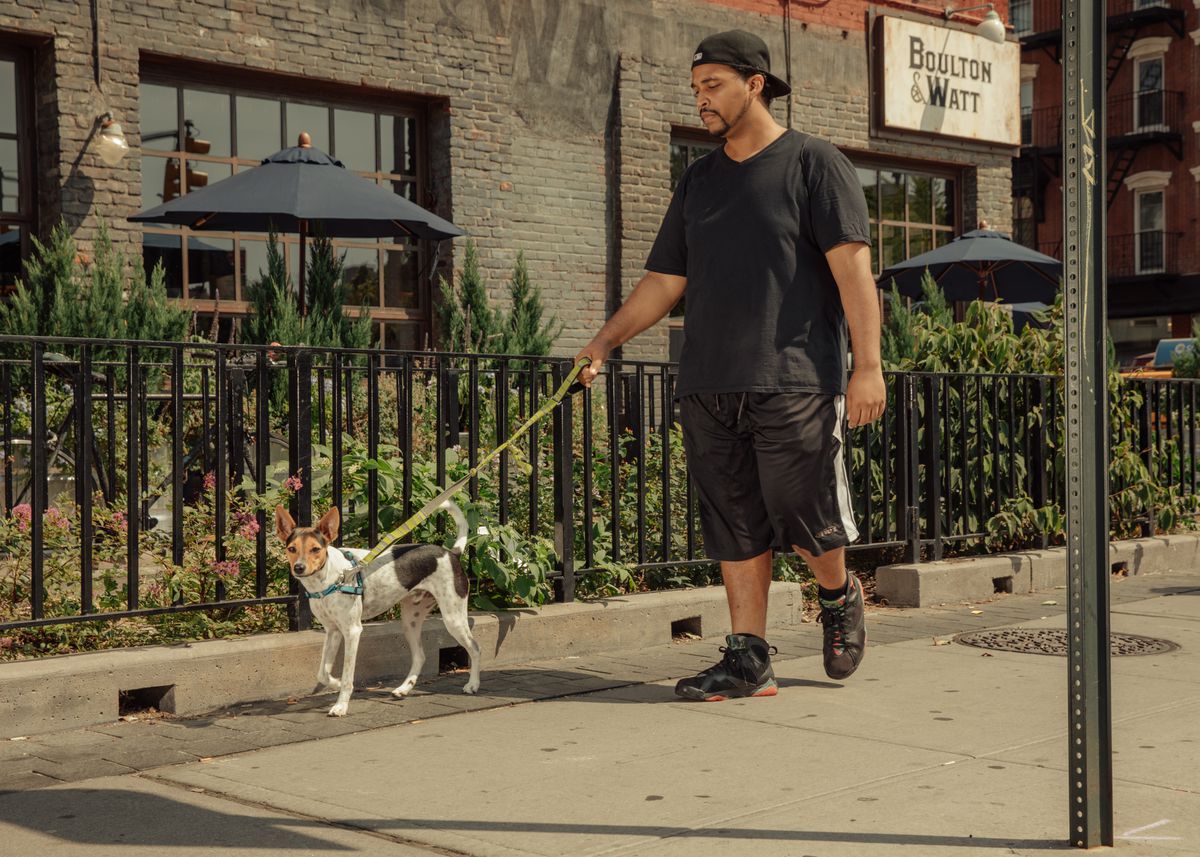
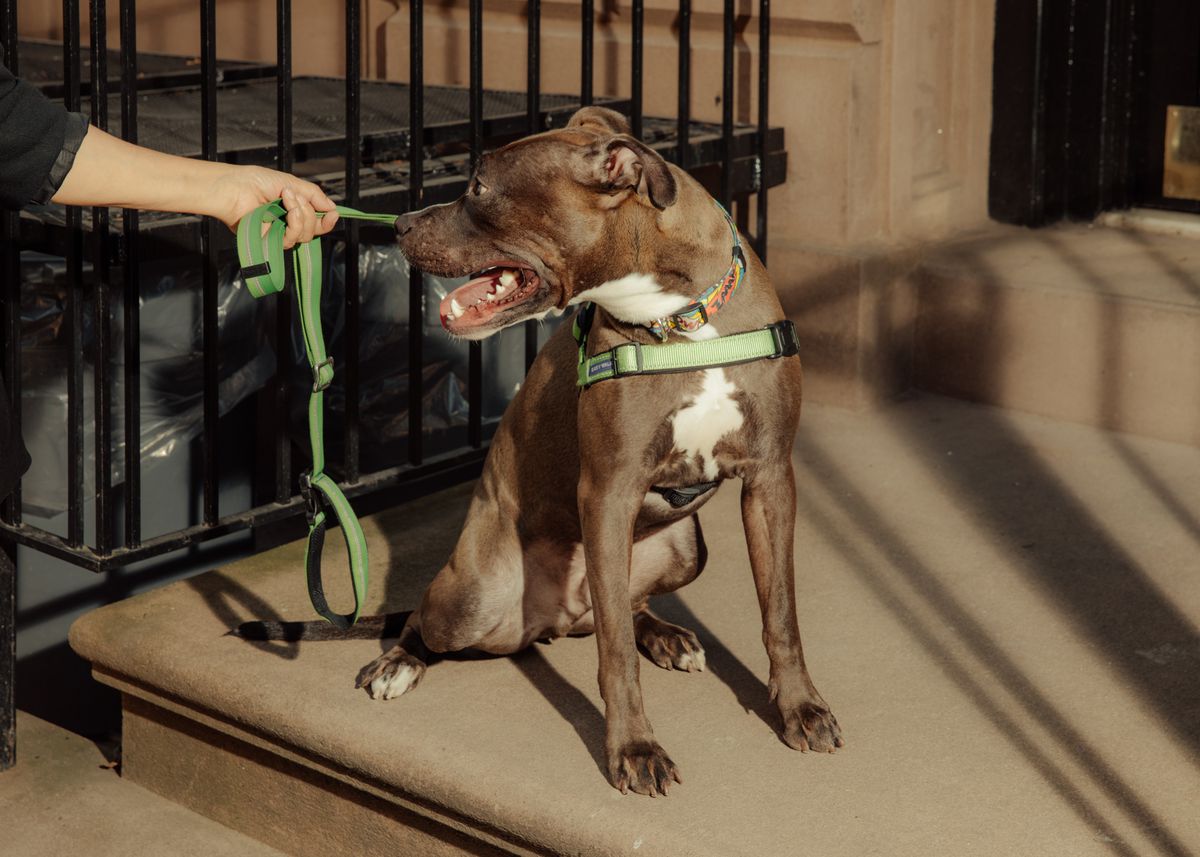
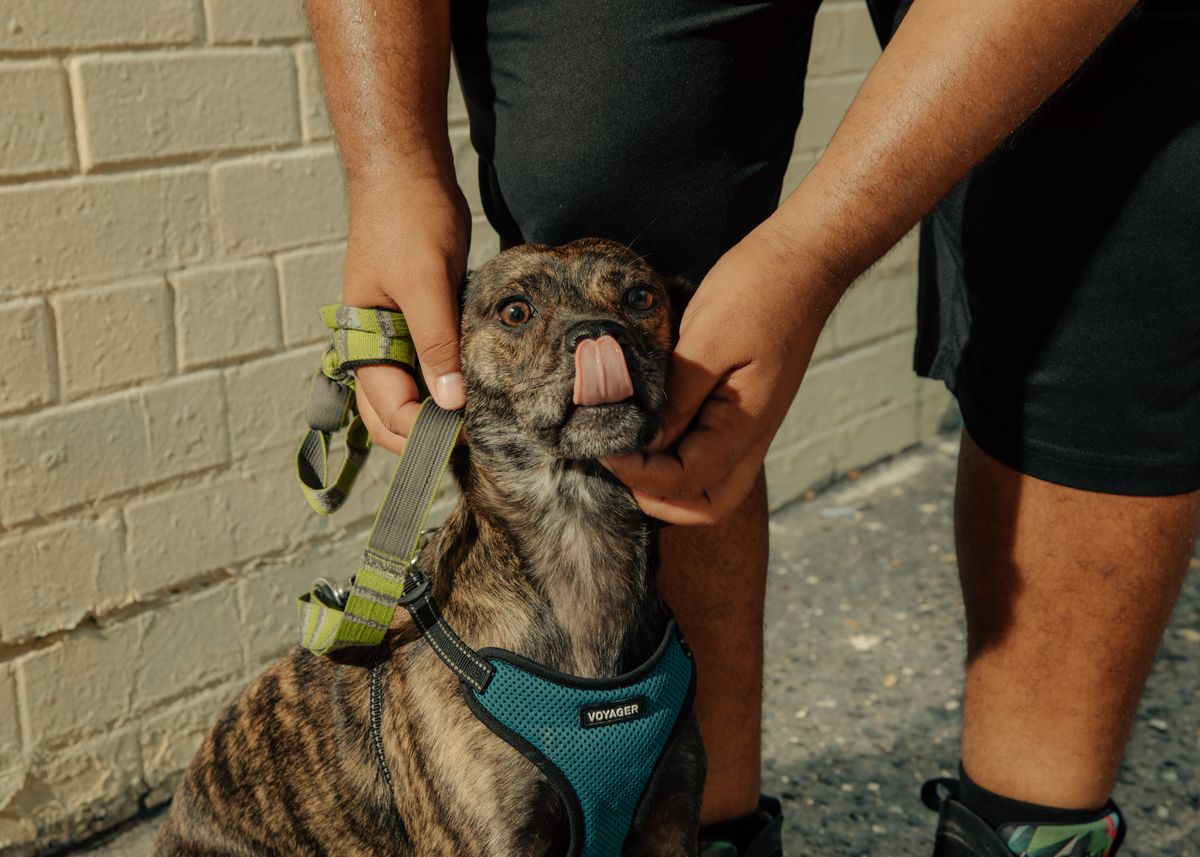
He completes round seven Rover walks an afternoon and seldom has to commute a long way from his condominium to get to his appointments. He receives a key to Berger’s condominium from the development’s doorman, although the remainder of his purchasers’ flats are available by means of Rover lockboxes put on condominium doorways and window bars or hooked up to close by motorcycle racks.
“I do have some non-Rover dog-walking clients, but I like the technology of the app because it eliminates the, ‘Hey, did you get my dog yet?’ texts,” he says. “Plus, there’s insurance coverage for their apartments, so if Reggie breaks out of his kennel and ruins Zach’s place, I’m covered.”
Reggie abruptly stops useless in his tracks, his eyes glued to a dog park. Two shaggy Lakeland terriers are wrestling whilst a goofy-looking boxer sunbathes belly-up on a park bench. Reggie whimpers, pulling onerous on his leash.
“He really wants to go inside, but I don’t do dog parks,” Rosario says, tugging Reggie away. “It’s way too much of a liability. Dogs can get injured quickly.” He pats Reggie’s head: “I know it looks fun, but there’s diseases in there, and I’d rather be safe than sorry. Sorry!”
At the tip of each walk, Rosario opens the Rover app and fills out a Rover Card, which isn’t in contrast to a college file card. It presentations Berger a map of Reggie’s walk, in addition to the choice of instances he peed and pooped. (Wag has a an identical function, aside from it one-ups Rover by way of permitting walkers to position poop and pee emojis alongside the path so house owners know precisely the place the trade will get carried out.) Rosario can even upload a brief written file in their rendezvous.
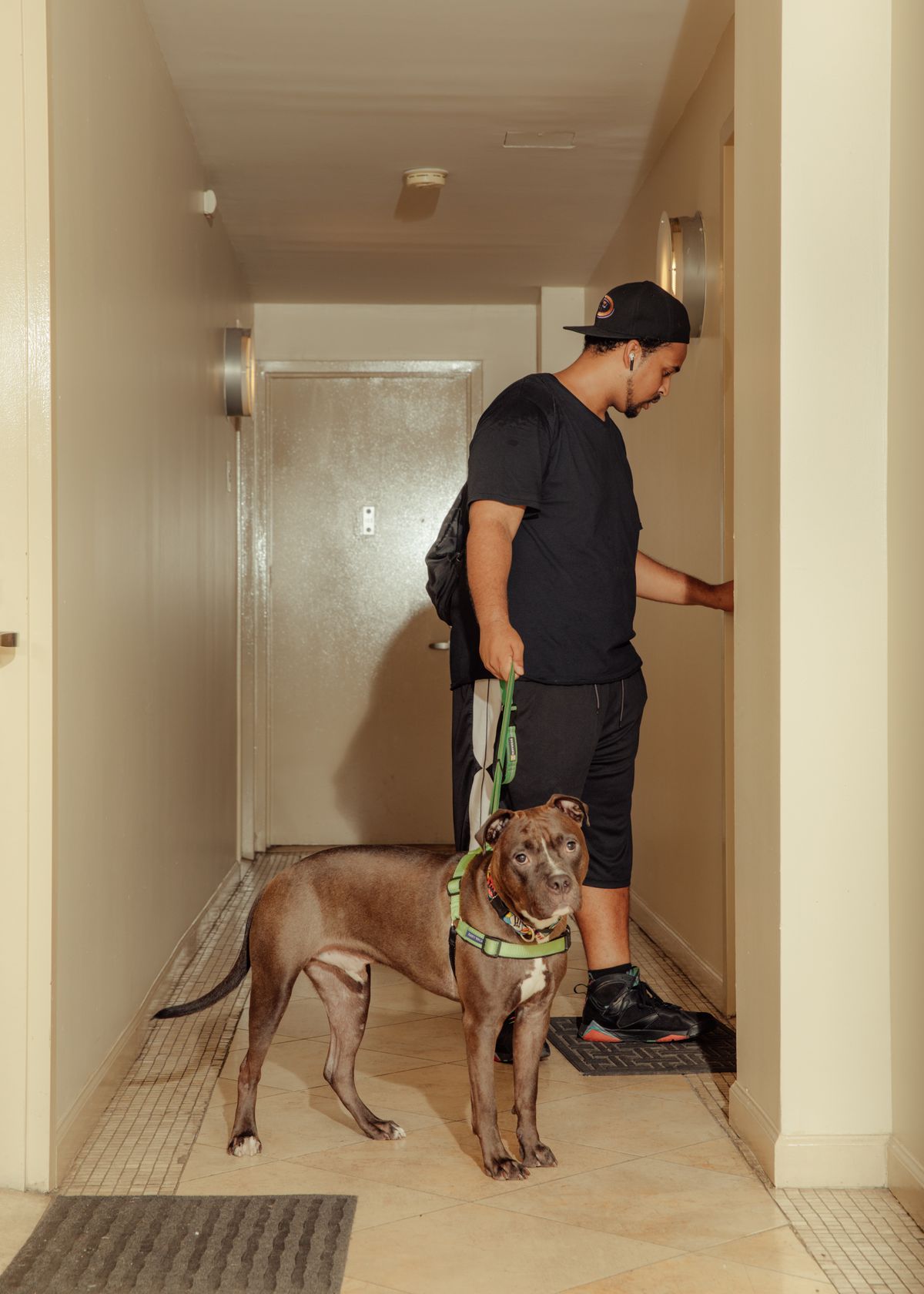
Walking canine with Rover may also be profitable for those who’re competitive, Rosario says. He earns $12 for each 30-minute walk and $18 for each 60-minute walk; this summer time, he’s averaging a per thirty days Rover source of revenue of $1,700. The reasonable part-time wage of a Rover employee is claimed to be about $1,000 a month, whilst those that deal with it like a full-time task can, in accordance to some accounts, earn about $three,300 a month. Rosario usually begins his workday round midday, however like his purchasers, he from time to time spends his evenings operating past due. He is any person who may get pleasure from an on-demand provider like Rover, so does he rent somebody to walk his personal canine?
“Absolutely not,” he says with a giggle. “I do not have that luxury.”
Rosario says he feels relaxed dealing with all forms of animals; he has revel in strolling giant canine and likewise owns a pibble like Reggie. As a Rover employee, although, he’s nonetheless put in danger day by day. While the corporate gives insurance plans for damages to Rover customers’ properties and for puppy accidents, it doesn’t be offering protection to its employees, who perform as impartial contractors. This loss of employee protection is not unusual for corporations within the gig financial system; Uber and Lyft have come below hearth for an identical insurance policies.
A Harlem-based Wag walker named Lexi says that right through her onboarding with Wag closing 12 months, she inquired about twist of fate protection for staff. Dogs chew, cats scratch, shit occurs. Would Wag lend a hand her if she were given injured? Lexi says her query used to be met with disbelief.
“I understand they can’t give us health insurance,” she says, “but it didn’t feel good that not only would the company not protect the walkers on the job, I was actually laughed at for asking.”
John Lapham, Rover’s basic recommend, is blunt about how he sees his corporate’s 200,000-plus contractors. He explains Rover’s employee legal responsibility this fashion: “If you walk into a store and you trip and get hurt, versus you walk into a store and you trip and get hurt while walking a Rover dog, it’s the same thing. What happens to an individual on a half-hour walk with a Rover dog can’t be different than what happens during the other 23 and a half hours a day.”
The base line is that Rover isn’t about to get started providing well being protection to its massive community of contractors. As Lapham places it, that’s for the reason that startup is at the beginning for pets. This is why it covers vet expenses however gained’t lend a hand pay for a employee’s go back and forth to the health center.
“The thing we’re most focused on,” he says, “is how do we continue to let people find each other through the platform — that is, facilitate dog boarding and dog walking.”
These types of dismissals of employee protection, in addition to the economics of the companies, have grew to become off some contractors.
“I got bit pretty bad by a dog and it made me question this whole model,” says Sammy, an aspiring fashion who constantly earned five-star critiques right through the 2 years he walked canine for Wag and Rover. After he learned those corporations wouldn’t quilt his clinical prices, he determined to take issues into his personal arms, the use of the apps to construct his personal roster of purchasers, who now pay him on Venmo.
“They take a huge cut from us but then don’t really have our interests at heart,” he says, “so I don’t mind taking their customers.”
In July, Wag instructed Nicole DiCarlo it used to be going to prevent in search of Norman the Chihuahua. It mentioned it will proceed to track its tip hotline, simply in case, and presented to make a donation to a dog charity of DiCarlo’s selection.
Wag instructed Vox that “based on a forensic analysis of evidence we collected during the search, we sadly believe that Norman likely was struck and killed by a vehicle shortly after he went missing. His parents asked us to continue the search, which we did through the end of July and then scaled it back after our CEO met with one of Norman’s parents to let her know. We are leaving the tip hotline and reward active to support his owners as they continue to look for him, and we will follow up on any leads received.”

DiCarlo and her boyfriend Cody Hunt have written off products and services like Wag. Ever since Norman’s tale used to be printed by way of the New York Post, a number of puppy house owners have reached out to DiCarlo to percentage how their pets have been misplaced by way of Wag and Rover. Following its Norman protection, the Post has persevered to diligently quilt canine long gone lacking with Wag: a Chihuahua named Sweets, a goldendoodle named Simba, a Chihuahua-dachshund combine named Freddie, a black Jindo combine named Teddy.
It seems that quite a few canine had been misplaced, harm, or killed whilst in Wag and Rover’s care. Pet horror tales involving the startups span the rustic, with circumstances in Georgia, New Jersey, California, Florida, Colorado, and Illinois, amongst many different states. Last 12 months, a dog in Las Vegas drowned whilst being watched by way of a Rover sitter. In 2015, a pug-Chihuahua combine from Brooklyn named Duckie used to be hit by way of a automotive and killed whilst out with a Wag walker. That identical 12 months, a Los Angeles poodle used to be fatally mauled whilst with a Rover boarder.
Both Wag and Rover say they paintings onerous to save you those scenarios, and level to their 24-hour are living strengthen hotlines as evidence. They say the hotlines are manned across the clock to be offering lend a hand in all possible scenarios, from an proprietor now not happy with a provider to a employee who has misplaced a dog. Rover’s hotline staff initiates seek efforts and hires other people to posts flyers for lacking animals. Wag’s does the similar, and the corporate has spent up to $30,000 or even deployed drones to search for a misplaced dog.
But those PR nightmares don’t fit up with the startups’ glossy guarantees, so the corporations do what they are able to to stay those tales out of the general public eye. In 2017, Wag slapped a circle of relatives with a cease-and-desist letter tough they take down indignant Facebook posts concerning the corporate shedding their Long Island Lab-beagle combine; Wag additionally reportedly presented the circle of relatives $2,500 to prevent speaking to the clicking. Additionally, each Wag and Rover have paid disappointed puppy house owners settlements in change for signing nondisclosure agreements.
Elaine Conoly, whose dachshund used to be killed by way of some other dog provide at her Rover sitter’s house, is a member of a Facebook team for former Rover customers who say their pets have been killed whilst within the startup’s care. Some of the contributors have got settlements from the corporate. Though Conoly wasn’t presented a agreement, she says she wouldn’t have taken one. She prefers to be in a position to discuss out in opposition to the corporate publicly.
“What is the 100 percent Rover Guarantee?” she asks. “It simply means if they kill your dog, it’s good for business because they don’t have to pay for vet bills. I’m seeking damages so people actually see what they were getting, which is no guarantee that your dog won’t be returned in a cooler or an envelope.”
Conoly says that since her tale were given out, a few dozen puppy house owners have contacted her with an identical tales. All are surprised that the corporate hasn’t reached out to them.
“The ‘Our Condolences’ automated email I got is the same one all of the other victims had gotten and is Rover’s one and only communication,” she says. “This is not the response of people who love dogs. While nothing will ever bring Wally back to me, they could have offered grieving services, reimbursed me for the vacation they destroyed, sent a care package to my other dog — a simple ‘I’m sorry’ is not good enough.”
A spokesperson for Rover says the corporate is “devastated over Ms. Conoly’s situation.”
“The safety of pets on our platform is our top priority,” the spokesperson persevered. “In the extremely rare event that a pet passes during a stay, our focus is on supporting their owner. We ensure that the service has been refunded and cover all veterinary expenses, including aftercare.”
Angry feedback in every single place Wag and Rover’s social media accounts additional underscore customers’ dissatisfaction with the corporations’ insurance policies and employees. Angry puppy house owners gripe that they can’t get involved with Wag over the telephone to deal with problems like compensation, whilst others criticize Rover for now not kicking irresponsible dog sitters off the platform, even after legit lawsuits had been filed. “The only decent people in the walking business are the dogs,” reads a touch upon Wag’s Facebook web page. Complaints muddle the Better Business Bureau’s website too.
When requested about canine that experience long gone lacking or been killed below their care, each Wag and Rover deal with such incidents are uncommon.
“We do millions of walks a year and we’re fortunate to have very few incidents relative to the volume of walks we complete,” says Schneider of Wag. “But we do take any incident very seriously, and we’re a learning organization.”
“When you start doing a million bookings a month, you need to be prepared for everything,” says Rover’s Easterly. “This is why we’re here 24/7 and have overinvested in our trust and safety team and emergency teams. We have the best practices for this, similar to Uber or Airbnb.”
In July, Wag employed Uber’s director of believe and protection analysis Heather Rothenberg. Under her management, Wag’s Trust and Safety staff is now restructuring right into a “case management system rather than a customer service one, so owners have one person they’re in touch with,” she says. “I’m also really excited to start teaming up with experts to develop training and information videos for our walkers.”
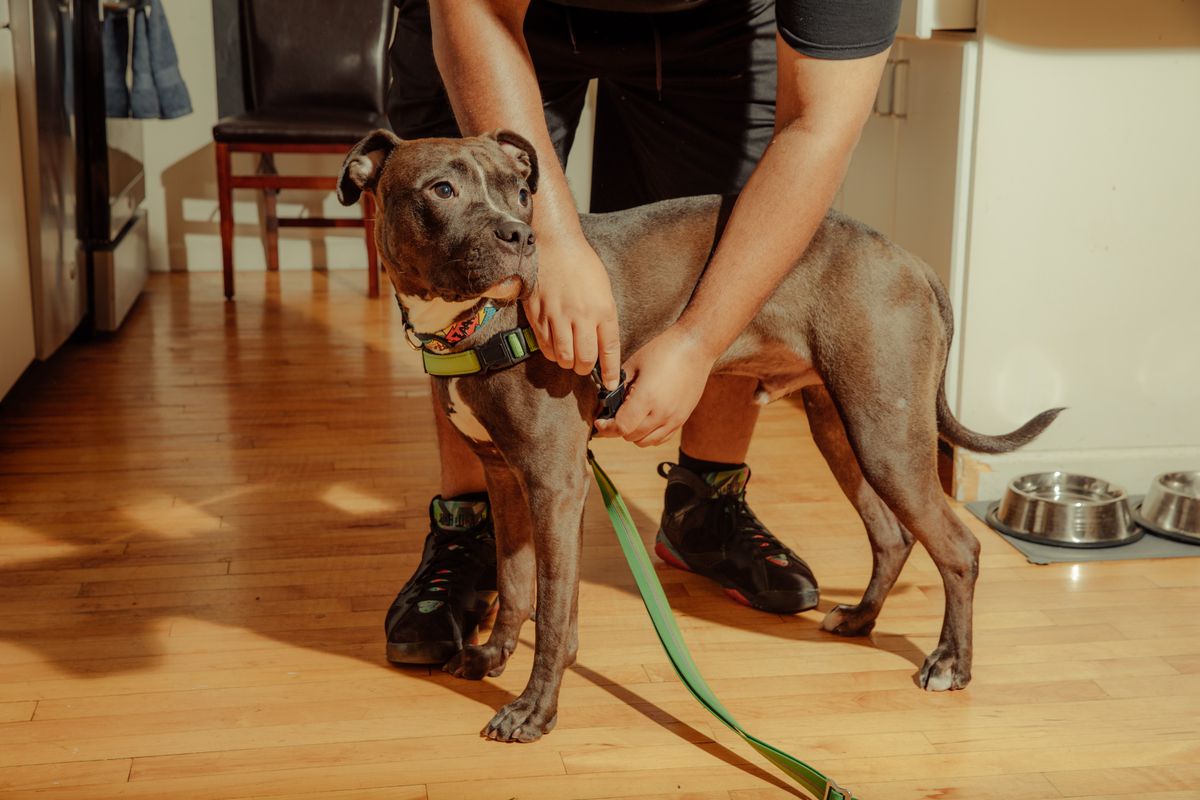
Videos are most probably now not sufficient. The present Wag and Rover onboarding processes contain a background take a look at, a quiz about fundamental dog care, an internet video lesson at the app’s interface, and a harness check (Wag’s harness check is in particular person, whilst Rover’s is completed on-line). Neither corporate calls for prior puppy revel in, and neither makes first support or CPR certifications necessary — accreditations which are usual in puppy care, in accordance to Lynda Mortensen, who owns the puppy products and services corporate Bay Area Pet Pals and has been within the trade for 10 years.
“It’s really not like anyone can or should be taking care of dogs,” says Mortensen. “I think anyone without CPR or first aid shouldn’t call themselves trained in pet care.”
Even present Rover and Wag walkers say the educational isn’t good enough.
“It was really basic, bare-bones training,” Lexi says of Wag. “I felt like more time was spent on the functionality of the app and less on how to actually interact with dogs, and or making sure you know what you’re doing once you’re in the field. As a dog owner and someone who, in general, is comfortable with dogs, I felt really nervous and unprepared for my first walk.”
Sandra Roosa lately left a overview on Trustpilot calling Rover’s coaching “a complete joke.”
“There should be a written test about dog safety for all sitters signed up for the app where you emphasize using backup collars and leashes and at least an hour-long basic CPR course,” Roosa wrote. “[Rover’s test] is incredibly unsafe and idiotic. Rover is clearly not at all dedicated to making sure safety comes first — you choose to test a walker’s knowledge on Rover Cards over how to handle a lost or injured dog situation, or how to prevent these incidents to begin with. Priorities?”
Wag and Rover’s meteoric upward thrust within the face of such a lot controversy is but some other instance of the outstanding resilience of tech corporations that make our lives more uncomplicated. The expansion of each startups has been reputedly unencumbered by way of stories of useless canine, uninsured employees, and unsatisfied shoppers. The comfort issue — Wag and Rover’s true, if now not wholly authentic, innovation — is profitable out.
It’s a well-known tale in Silicon Valley. Take Uber, which become the topic of public outrage and a #DeleteUber marketing campaign after it seemed to be in strengthen of President Trump’s 2017 govt order banning other people from seven Muslim-majority nations from coming into the rustic. Just weeks later, allegations of sexual harassment on the corporate have been printed. Nevertheless, lately the corporate is experiencing fast consumer expansion, with bookings up 41 % within the closing quarter. Facebook’s Cambridge Analytica scandal has made the corporate the least depended on in tech, however a up to date ballot discovered that three-quarters of Facebook customers nonetheless use the social media community up to or greater than they did earlier than the scandal.
It isn’t simply the general public’s willingness to forgive and overlook that signifies Wag and Rover are destined for additional luck. They’ve each were given giant cash on their facet. T. Rowe Price, the worldwide asset control company that used to be an early investor in each Uber and Facebook, led Rover’s most up-to-date $125 million investment spherical. Wag has Softbank’s landmark $100 billion fund to thank for its newest $300 million.
Still, each corporations will have to innovate so as to stay their traders’ tails wagging. Rover plans to extend into different on-demand puppy products and services like grooming. Before that, although, it’s understanding its world ambitions, having lately expanded to London and opening for trade in Germany later this 12 months.
Wag is shopping into techniques it could actually additional differentiate its strolling provider. Among the brand new options it’s piloting is one that permits customers to request how a long way they would like their puppy walked. This is in reaction to house owners changing into obsessive about their puppy’s health, Schneider says, “while there are others who just want their dog to get outside and smell the roses but not be pushed one bit further.” Wag may be trying out meals (fresh-cooked, no much less), which is the place the giant margins within the puppy trade come from.
The unending parade of services and products puppy oldsters are prepared to splurge on are positive to supply expansion alternatives for slightly some time.
Schneider says Wag has been interested by the overall existence cycle of a dog, from buying and adoption thru pet existence up to the very finish. “All the services that you use today that don’t come to you ultimately could come to you,” she says. She added that she lately had to put down her personal dog. “It’s an example of a service that can be much better than taking a dog to a vet.”
On-demand domestic dog euthanasia? Now that might be one thing.
Want extra tales from The Goods by way of Vox? Sign up for our e-newsletter right here.
[ad_2]



